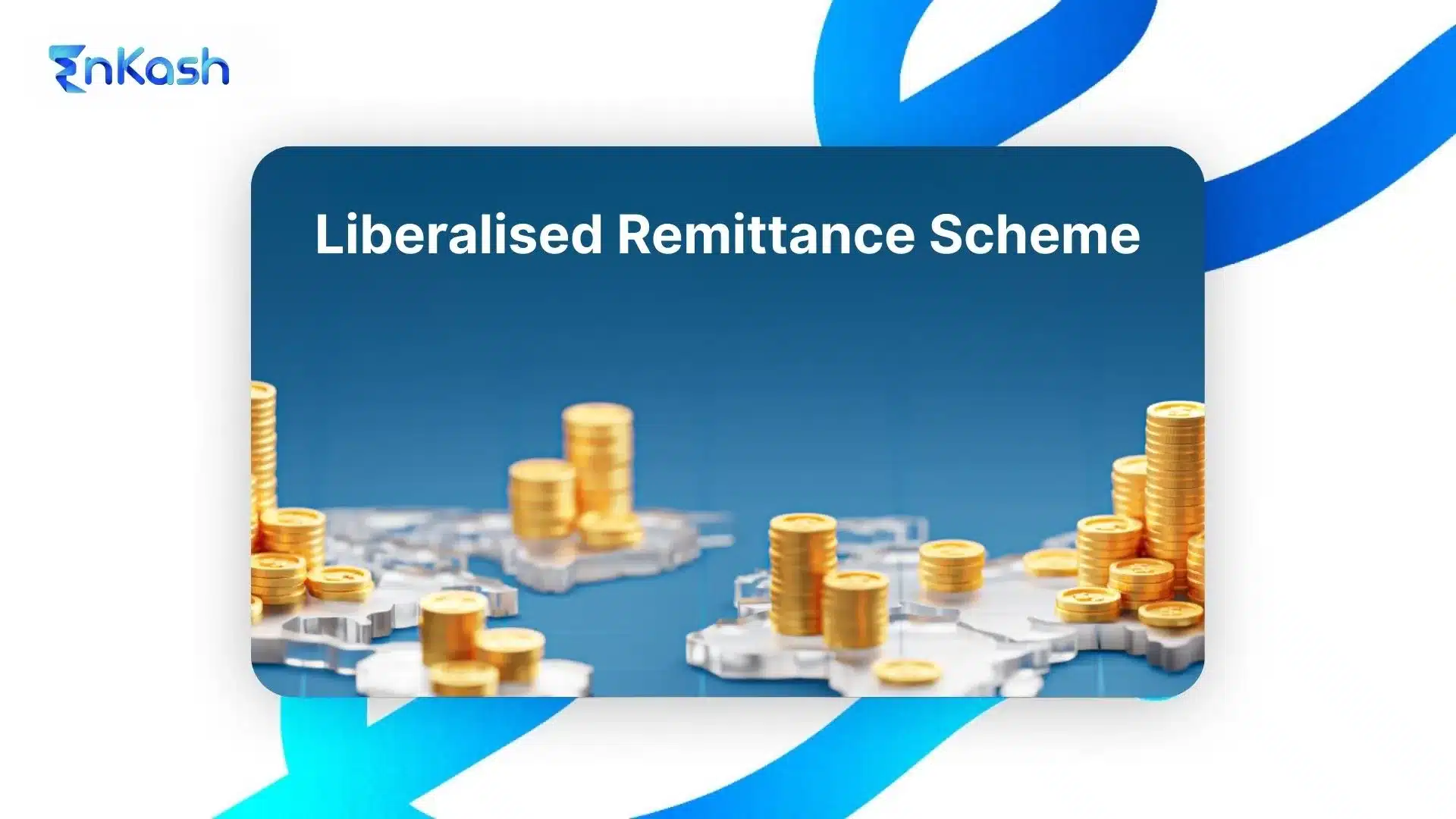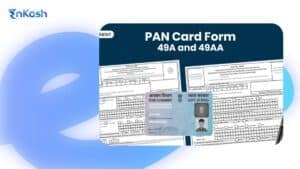Remittance, meaning, at its simplest, is just money being sent across borders (from India to somewhere else). When we say outward remittance, we’re talking about funds moving out of India to someone abroad, maybe your child paying college fees in the U.S., or you helping family in London, or just covering your own travel expenses. Sometimes it’s investments. Sometimes it’s everyday support.
For decades, foreign exchange was tightly controlled, approvals dragged on, and small transactions could feel like pushing through red tape. That changed in 2004 when the Reserve Bank of India (RBI) introduced the Liberalized Remittance Scheme (LRS). It gave residents a clear channel, defined limits, set guidelines, and fewer headaches.
Think of the Liberalized Remittance Scheme as India’s official gateway for individuals to send money overseas. You convert your rupees into foreign currency and transfer them for approved uses; no constant RBI nods needed. It’s part of the country’s gradual shift toward an open economy: letting people and businesses connect globally, while still keeping some oversight in place.
And the numbers prove it. Outward remittances under LRS have grown sharply since the scheme began. Students, professionals, families, and millions now rely on it.
Stay tuned to learn everything about the Liberalized Remittance Scheme
What is LRS Full Form and LRS Meaning
LRS full form
LRS refers to the Liberalized Remittance Scheme (sometimes written as Liberalised). The Reserve Bank of India rolled it out in 2004, and it marked a clear break from the old system. Before then, sending even modest sums abroad meant knocking on RBI’s door for permission every single time. The process was slow and discouraging. With LRS, the RBI put in place a simple rule. Instead of approvals for each transfer, residents get a fixed yearly allowance. Within that limit, money can be sent overseas for approved reasons without repeated paperwork.
LRS meaning
At its simplest, LRS is a framework under the Foreign Exchange Management Act (FEMA). It lets resident Indians send a defined amount of foreign exchange abroad each financial year. The idea was to align India with a more open economy and allow people to participate in global transactions without constant restrictions. Under this scheme, even minors are included, though a guardian signs on their behalf. The money can be used for a wide range of needs like tuition fees, travel, healthcare, investments, or even gifts to relatives abroad. What matters is staying within the annual cap and sticking to the permitted uses.
Why was LRS introduced?
By the early 2000s, India’s economy had opened up in ways the old rules couldn’t keep pace with. Students needed to pay tuition abroad, families wanted to support relatives, and professionals had bills waiting in other countries. The old setup? Every transfer required the RBI’s stamp of approval. It was slow, paperwork-heavy, and frankly out of touch.
The RBI knew this wasn’t sustainable. So, it brought in the Liberalized Remittance Scheme. Instead of people chasing approvals for each transaction, a single yearly limit was set. Banks took over the responsibility of checking paperwork and declarations. That way, genuine remittances could move quickly, but regulators still had a clear view of how much money was leaving and why.
Key features of LRS
- Annual limit: Back in 2004, the allowance was only USD 25,000. That figure was gradually revised upwards as India’s economic position strengthened. Today, the cap stands at USD 250,000 per individual per financial year, a much more practical number for global needs.
- Permissible transactions: The scope is broad. On the current account side, you can remit for travel, education, medical treatment, or maintenance of relatives abroad. On the capital account, it covers investments, buying property, or even setting up ventures overseas. Anything not flagged as prohibited is generally allowed.
- No specific approval needed: Unlike the old system, you don’t have to seek RBI permission for every single transfer. Instead, your bank handles the process. All you need is to complete the required forms, give supporting documents, and make your declaration.
- Monitoring and compliance: Every remittance is tied to your PAN, so the RBI and banks can track if you’ve stayed within the annual cap. This also helps prevent misuse. On top of that, the government applies Tax Collected at Source (TCS) on large outward remittances, which acts as an additional safeguard.
The Liberalized Remittance Scheme is a structured but user-friendly framework. It lets resident Indians send money abroad up to the yearly limit, for permitted purposes, without having to chase regulatory approvals each time.
Who Can Use the LRS Scheme
The LRS scheme is meant only for people living in India. That’s the first thing the RBI makes clear. If you qualify as a resident under FEMA, you’re allowed to send money abroad within the prescribed limit. Even minors are included, though in their case, a parent or legal guardian has to step in, sign the paperwork, and take responsibility for the transfer.
Now, who actually gets to use LRS? If you’re an ordinary resident, you’re in. That includes salaried people, professionals, or anyone else with a PAN and a bank account. Minors are technically eligible, but their guardian must handle the declaration. And if you run a sole proprietorship, remember it isn’t a separate legal entity. Any remittance is made in your personal capacity, not in the name of the business. The limit applies to you as an individual.
On the other hand, the scheme shuts the door firmly on non-individuals. Companies, LLPs, HUFs, trusts, and the like are excluded. NRIs too cannot use LRS. It’s not meant for them. They have other channels, such as NRE or FCNR accounts, or transfers through their NRO accounts within the allowed cap.
So the rule of thumb is simple. If you’re an Indian resident with a PAN and a bank account, you can almost certainly make use of LRS. If you’re a business entity or an NRI, you’ll need to look at other FEMA routes.
LRS Limit and LRS Scheme Limit
The LRS limit today stands at USD 250,000 for every individual in a financial year (April to March). That’s not per transfer, but the grand total of everything you send out under the scheme in that year.
A few things worth noting:
- The ceiling is cumulative. Send money ten times or fifty, it all piles into the same bucket.
- If you don’t use the full quota? It disappears with the year. You can’t carry it forward.
- There’s no restriction on how many transfers you make, as long as the combined value doesn’t tip over the USD 250,000 mark.
- Each family member has their own allowance. You can put those limits together only when everyone is a co-owner of the property or investment abroad. Just pooling money to stretch someone else’s quota isn’t permitted.
- Go past the limit and you’ll hit a wall. Banks won’t process it, and you will need RBI approval, which is technically possible but is rarely given.
Since its start in 2004, the cap has been raised several times, matching India’s gradual shift toward liberalisation. If you’re planning multiple remittances, it pays to map them out early in the year to stay comfortably inside the boundary.
Permitted and Prohibited Transactions under LRS
The RBI allows a broad range of uses under the Liberalized Remittance Scheme, but each has to fall within the overall yearly cap. Think of everyday needs like paying for your child’s college abroad, sending money to parents overseas, or covering hospital bills in another country. All of these qualify.
Some of the common permitted purposes include:
- Private travel abroad for leisure or personal visits.
- Paying tuition fees and covering living expenses for education outside India.
- Meeting relocation costs when emigrating or taking up employment overseas.
- Supporting close relatives who live abroad by transferring money for their daily upkeep.
- Sending gifts to family or making donations to approved charities.
- Paying for conferences, training sessions, or business-related travel.
- Covering medical treatment costs overseas, including hospital and travel expenses.
- Other legitimate personal expenses that don’t fall under the restricted list.
On the capital account side, the scheme opens up options such as investing in foreign shares, bonds, and mutual funds, purchasing property abroad, or even setting up a business overseas (provided you follow the reporting rules). You can also open and fund bank accounts abroad, or extend loans and rupee gifts to NRI relatives, again within the scheme’s limits.
Prohibited Transactions under LRS
There are, however, strict red lines. Money cannot be sent under LRS for gambling or lottery tickets, whether that means casino chips or online betting platforms. Similarly, margin trading or speculative forex trades with overseas brokers are barred.
Funding overseas cryptocurrency exchanges or buying digital currencies through LRS is something banks simply don’t process. Transfers to countries or organizations flagged by the FATF or under sanctions are also blocked. You also cannot use LRS to purchase Foreign Currency Convertible Bonds of Indian companies in the secondary market abroad. And one last restriction is that you cannot transfer your annual quota to another resident by putting money into their foreign account to help them sidestep their own limit.
TCS on LRS and Tax on Foreign Remittance
People usually ask, “Do I have to pay a special tax just to send money abroad?” The answer is simpler than it seems. There’s no separate remittance tax. What does exist, though, is a rule under the Income-tax Act that tells banks to collect (Tax Collected at Source) once your outward transfers under the Liberalized Remittance Scheme cross a fixed limit. Think of it as the government taking a small advance on your income tax. It isn’t money lost; it sits against your PAN and either reduces what you owe later or gets refunded if you’ve overpaid.
Now, how does that work in practice? The bank deducts a percentage from the amount you’re sending, but only the portion that goes above the threshold. That cut goes straight into the system under your name. Later, when you file your return, you simply claim credit. If your actual liability is smaller, you’ll get the excess back.
The tricky part is that rates have shifted significantly in the last few years.
- Between October 2020 and September 2023: The threshold was ₹7 lakh in a year. Above this, banks collected 5%. If it were for education paid through an approved loan, the rate dropped to 0.5%. Tour packages had their own rule. It was 5% from the start, with no threshold in the early phase.
- From October 2023 to March 2025: The limit stayed the same at ₹7 lakh, but the rates hardened. Education and medical transfers were still at 5% beyond the threshold (0.5% if it was a loan-funded education). Everything else, though, investments, gifts, and property, moved up sharply to 20%. Even tour packages were split: 5% up to ₹7 lakh, and then 20% once you crossed it.
- From April 2025 onwards: The government raises the threshold to ₹10 lakh. That’s a relief for many. Loan-funded education gets a full exemption. Education and medical expenses, if you’re paying yourself, attract 5% above that new limit. But other remittances stay at 20%. Tour packages follow the same slabs.
Here are a few things worth remembering. First, TCS isn’t really an expense. If you file your taxes, it’s just a credit. Second, this applies only to money going out of India, never to what comes in. And third, if you’re planning something big, say an investment abroad or hefty education fees, it pays to keep the threshold in mind. Some people even spread their transfers across two financial years to manage how much gets locked up in TCS.
LRS Declaration and Documentation Requirements
Banks won’t move your money abroad unless the paperwork checks out. Under the LRS scheme, they go by your declarations and whatever proof you bring along. In practice, here’s what usually comes up:
- PAN is non-negotiable. No PAN means no remittance.
- Form A2 is where you tell the bank why you’re sending the money and promise you’re within the annual limit.
- There’s also an LRS declaration. Some banks tuck it into Form A2, others keep it separate.
- Then come the purpose papers. They vary. They can be for college fees, the admission letter and invoice. For medical treatment, hospitals may ask you to submit an estimate or a letter from the doctor. If it’s emigration, the visa paperwork does the job. Buying a flat abroad? The bank will want to see the agreement or at least a broker’s note. And for gifts or family support, a simple statement about the relationship usually works.
- Form 15CA and 15CB sometimes enter the picture. These are income-tax forms, and the need depends on the transaction size and type.
- Don’t forget KYC. If your profile is outdated, the transfer gets stuck. For larger amounts, banks often demand proof of where the money’s coming from, such as tax returns, salary slips, or even bank statements.
- For investments or property deals, you’ll be told to stick to a designated branch. They like keeping such transactions routed through one point.
- And, of course, before hitting send, the bank will ask you to sign off on the rate and charges. These include the exchange rate, their fee, GST, and any other deductions.
Role of RBI in LRS
The Reserve Bank of India sits at the center of the Liberalized Remittance Scheme (LRS). Its job is not just about announcing limits; it’s about shaping the entire framework and keeping the system running fairly.
- Back in 2004, the RBI first rolled out LRS. The idea was simple – let residents send money abroad more freely, but within a safe boundary. Since then, the annual limit has moved up and down, depending on how the economy and foreign exchange reserves looked at the time.
- The scheme itself is governed by FEMA. RBI keeps it alive through Master Directions, circulars, and regular FAQs that tell people what they can do and what stays off-limits.
- Banks and money changers don’t operate in this space on their own. They’re licensed by the RBI and expected to follow clear due diligence rules. Every transaction they process gets reported back, so the regulator can watch trends and, if needed, tweak the rules.
- Break the framework and you risk penalties under FEMA. This keeps the system from being used for things it was never meant to cover.
- Over the years, RBI has also chipped away at unnecessary red tape. The goal is to make genuine transfers, like paying tuition, covering medical expenses, or investing abroad, less of a headache.
- And finally, there’s the matter of exchange rates. India runs on a market-determined system. Banks set the rate for customers, not the RBI. Still, when the rupee swings too wildly, the central bank steps in to smooth things out.
Outward Remittance Meaning and Process
Outward remittance is nothing complicated. It’s just the act of money leaving India for another country. Under the LRS Scheme, that means converting your rupees into a foreign currency and wiring them either to someone abroad or even to your own account outside India. Simple idea, though the steps do need a bit of care.
How the process usually works
- Pick your channel
Start with a bank you already deal with, or go through an RBI-approved money changer or fintech. That’s non-negotiable. Only authorized dealers are allowed to handle foreign transfers. - Paperwork time
PAN is a must. Then comes Form A2, where you declare why you’re sending the money. Depending on the case, the bank might nudge you for Form 15CA/15CB as well. If it’s for studies, you may have to attach an admission letter; if for medical reasons, expect to show a hospital estimate. - Details of the transfer
How much, in what currency, to whom, and why. You’ll also give the beneficiary’s full information: name, address, bank account or IBAN, and the SWIFT code. Miss one detail and the transfer might hang in limbo for a few days. - Rates and fees
Here’s where you want to pay attention. The bank quotes an exchange rate and slaps on charges like remittance fee, GST, and correspondent bank costs. And don’t forget TCS, which kicks in once you cross the threshold. It’s worth asking twice what exactly you’ll be paying because “hidden spread” on the exchange rate is common. - Execution
Once cleared, the bank debits your INR, converts it, and pushes it through SWIFT. You’ll get a UTR or SWIFT number. Note it down. It’s your tracking code. Funds usually land in 1–2 working days if you’re sending to major destinations, though hiccups can happen. - Keep a trail
Save everything, including remittance advice, UTR slip, and TCS acknowledgement. These aren’t just receipts. You’ll need them when you file taxes or if the remittance gets questioned later.
Other routes exist too, such as foreign currency demand drafts or loading money onto a forex card if you’re travelling. And as a reminder, this entire setup is strictly for individuals under LRS. Businesses sending money abroad follow different FEMA rules entirely.
Conclusion
The Liberalized Remittance Scheme is, at its core, a tool for Indian residents to move money abroad without constant approvals. The ceiling is clear, USD 250,000 per year, per person. Within that, the range of uses is broad. It can include sending a child’s tuition, covering a medical bill overseas, helping family, or even investing in property and securities abroad.
Under LRS, plan your remittances. Don’t just send blindly. If you’ve got multiple obligations in a year, pace them within the cap. If the amount is high, think about splitting across financial years. When unsure, speak to your bank’s forex desk. That one call might save you a lot of hassle.
In the end, the LRS is a bridge. Used with a bit of foresight, it’s not just compliant; it’s also effective.
FAQs
1. What happens if I exceed the USD 250,000 LRS annual limit?
If you go over the cap, you’re stepping outside FEMA rules. In most cases, your bank will stop the transfer before it goes through. But if an extra amount somehow slips past and gets flagged later, you could face penalties and official proceedings. Unless you have RBI approval, which is rare, you’ll need to plan better and spread large payments across financial years instead of trying to send them all at once.
2. Is the USD 250,000 limit per person or per bank account?
It’s tied to you as an individual, not the account. The RBI tracks it through your PAN, so using different banks or juggling multiple accounts won’t give you extra room. Every rupee you send under LRS is linked back to your PAN and added up against the annual limit.
3. How do I claim back the TCS collected on my foreign remittances?
When the bank deducts TCS, it shows up in your Form 26AS and in the AIS. Later, while filing your income tax return, you treat it as tax already paid. If your overall tax liability is less than what was collected, the difference simply comes back to you as a refund. It’s not money lost, just money parked with the department until you file.
4. Can I use LRS to invest in cryptocurrencies or trade forex on overseas platforms?
No. Banks are instructed not to process such transfers. That means you can’t use LRS to load money into a foreign crypto exchange or to fund leveraged trading accounts abroad. These fall into the prohibited basket. So, the remittance will get blocked.
5. I am an NRI. Can I remit money from India under LRS?
LRS is for residents only. If you’re an NRI, you’ll have to rely on other channels, like sending money out of NRE or FCNR accounts without restrictions, or transferring funds from an NRO account within the allowed ceiling. The scheme doesn’t apply once you stop being a resident.
6. Can Indian companies or businesses use LRS?
No. The scheme is designed solely for individuals. Businesses, firms, or trusts remit under separate FEMA provisions, such as trade remittances or Overseas Direct Investment rules. LRS does not extend to them.
7. Does money sent abroad under LRS get taxed again in India?
The act of remitting is not taxed. The TCS collected is simply an advance tax credit, which you can claim later. What does get taxed is the income you might earn abroad from those remitted funds, like dividends, rent, or capital gains. Since you’re a resident, it counts toward your Indian taxable income, though you can claim credit if you’ve already paid tax overseas.
8. Do I need to bring back unused foreign exchange or income earned abroad from LRS investments?
If you carry travel forex and don’t use it, amounts beyond a small threshold should be returned or reloaded within the time RBI allows. On the other hand, income from investments made abroad, say interest or rental income, can stay outside India and be reinvested there. Just remember to report it in your Indian tax return, because it’s still taxable here.
9. What is the full form of LRS, and what does it signify?
LRS stands for Liberalized Remittance Scheme. It’s the RBI’s framework that gives Indian residents the freedom to send money abroad up to a fixed annual amount without running for approvals each time. In short, it’s the official rulebook that makes overseas transfers simpler and more transparent.
10. What does outward remittance mean in this context?
It’s just money flowing out of India to another country. Under LRS, outward remittance refers to residents transferring funds abroad, for things like paying tuition, supporting family, travelling, or investing, so long as the total stays within the annual ceiling.












